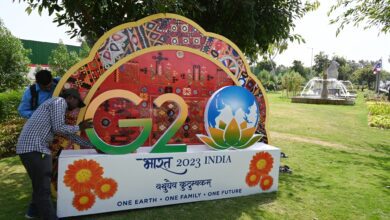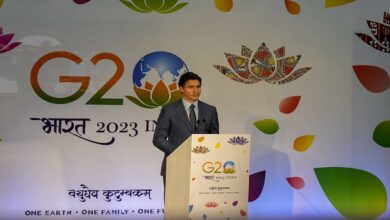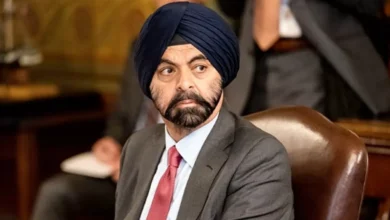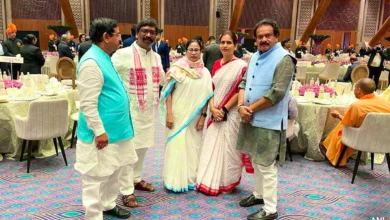How does the G20 Presidency chair rotate between its member countries?
The Indonesian president Joke Widodo had transferred the G20 Presidency to India and PM Modi at the 2022 Bali Summit.
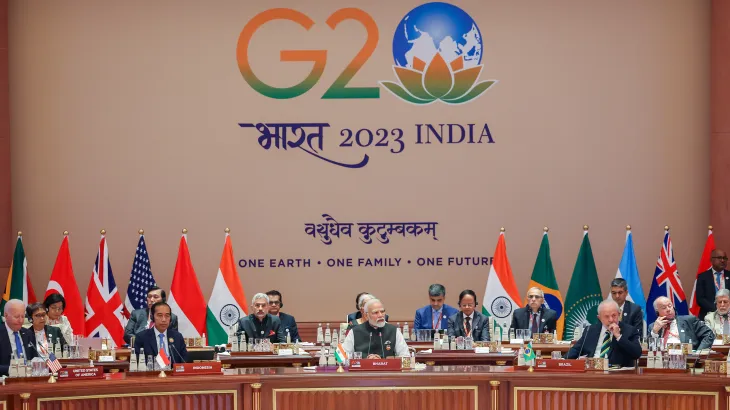
India holds the current G20 Presidency and has started welcoming various world leaders and top delegates including US President Joe Biden, French President Emmanuel Macron, UK Prime Minister Rishi Sunak, Canadian Prime Minister Justin Trudeau, and more to its G20 event being held in its capital, New Delhi from September 9-10. India will continue to preside over the G20 till November 30, 2023. After India, Brazil will take over the G20 Presidency. Indonesian President Joko Widodo officially transferred the G20 presidency to India and Prime Minister Narendra Modi at the Bali summit on 16 November 2022.
But how is the president of a G20 summit selected? And as the president, what international issues will India look to focus on?
In December each year, a different G20 member country assumes the presidency of the Group. The grouping represents around 85 percent of the global GDP, over 75 percent of the global trade, and about two-thirds of the world population. As an informal group, the G20 doesn’t have a permanent secretariat. The summit and the preparatory processes often include more than 60 ministerial and working group meetings per year that are coordinated by the respective host country.
CHOOSING THE G20 PRESIDENT
The Group of Twenty (G20), one of the world’s most important forums for international economic cooperation was formed in the year 1999 following the Asian financial crisis and consists of 19 member states and the European Union. It was formed as a forum meant for finance ministers and central bank governors to discuss financial and economic issues of the member countries.
The 19 countries are divided into five groups, with four groups having four member states each. They are:
- Australia, Canada, Saudi Arabia, and the United States
- India, Russia, South Africa, and Turkey
- France, Germany, Italy, and the United Kingdom
- China, Indonesia, Japan, and South Korea
The fifth group consists of three member states – Argentina, Brazil, and Mexico.
ROTATION OF REGIONAL GROUPS
The president is chosen through a rigorous system of rotation. To this end, the 19 member states of the G20 (the 20th member being the EU as a whole, which is not part of a country group) are divided into five groups, consisting of a maximum of 4 states. Though, not all the groups are regionally divided. Three of them are, that is, Latin America, Europe, and East Asia.
The country groups are predominantly organised on a regional basis i.e., nation-states from the same region are usually placed in the same group. Only two country groups deviate from this regional approach; they are Group 1 (Australia, Canada, the USA, and Saudi Arabia) and Group 2 (India, Russia, South Africa, and Turkey).
Every year, the G20 selects a country from another group to be the president. This principle was introduced in 2010 when South Korea won the G20 Presidency. For the unversed, the G20 consists of the Finance and Sherpa tracks. The Finance Track is led by the finance ministers and central bank governors of the member countries, while the Sherpas, or emissaries of the state leaders, lead the Sherpa Track. Within these two tracks, representatives of relevant ministries as well as invited or guest countries, as well as various international organisations participate in thematically oriented working groups. The Ministry of Finance leads the Finance Track, while the Sherpas discuss agenda items for the summit and coordinate the substantive work for the G20. Also, there are engagement groups that bring together different sections including women, youth, labour, businesses, researchers, civil societies, and parliamentarians.
The G20 Presidency decides the agenda for the year along with hosting the summit. It must be added that the presidency is supported by ‘Troika’ – comprising of the previous, current, and upcoming Presidency. The upcoming Presidency is of Brazil. Hence, the Troika as of now comprises India, the current Presidency, Indonesia, the former Presidency and Brazil, the upcoming Presidency.
Except for 2009 and 2010, when there were two Summits per year, the G20 has held one annual Summit, usually between September and November. There have been a few exceptions when Canada (2010) and Mexico (2012) convened the Summit in June. Germany convened its Summit in July 2017 in Hamburg.
Negotitation between countries within the groups
Within a group, all the countries are eligible to take over the G20 Presidency when it is their group’s turn. Therefore, the states within the relevant group need to negotiate between themselves to select the next G20 President. Eleven of the 19 G20 member countries have presided over the G20 including Germany.
Sometimes there are also intra-group negotiations about which country in the particular group should assume the next presidency. Thus, for the 2018 presidency, it was Group 3’s turn, with Argentina, Mexico, and Brazil as contenders but Mexico had already hosted the summit in 2012 and, since Brazil slid into a national crisis in 2016, it did not wish to take over the G20 Presidency. Therefore, Argentina was chosen.
However, Argentina had to fight off interest from India to win its bid because Argentina’s elections took place in December 2015, there was a delay in the country’s claim to the G20 Presidency. In early 2016, India’s Prime Minister Modi made a bid to host the 2018 Summit But, after Argentina’s new President, Mauricio Macri, took charge of his office, he stated that he was not prepared to swap the position with India. Therefore, in mid-2016, the Indian government had to withdraw its ambitions and plans to host the world event.
The timing of elections may determine the choice of a country to preside over the G20 as well as the date of the Summit. In 2019, the President was selected from Group 2 which comprised of India, South Africa, Russia, and Turkey. The latter two countries had already hosted a G20 Summit. One reason that India’s Modi made a bid for the 2018 G20 Presidency was because, in 2019, there were parliamentary elections to be held in India. Therefore, the Indian government started negotiating with the South African government to determine which government would preside over the 2019 G20. Eventually, India finally got to host the 2023 G20 Summit.
In 2017, Germany was faced with hosting the G20 in an election year, which is why its summit took place in July instead of later in the year, as is customarily the case. While German Chancellor Angela Merkel’s highest priority was the federal election, she was also deeply engaged in leading the 2017 G20 process – not only for the sake of G20 but also for ways that her leadership of the G20 would have affected her party’s position in the elections.
Please, also have a look into : G20 summit’s major accomplishments under Indian presidency
